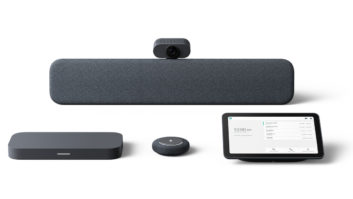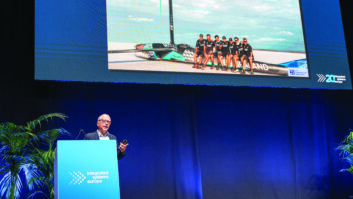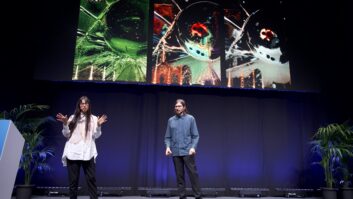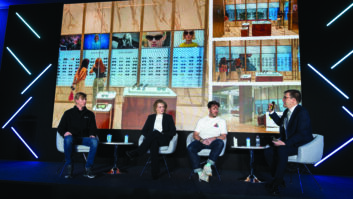
The last two presentations at InfoComm’s Future Trends Summit – which took place at the RAI the day just before ISE opened – looked at the challenges involved in putting pixels on screen and moving them around the network.
John Dye of Avistar (pictured) focused on the three key challenges facing videoconferencing: interoperability and standards; integrating web-based conferencing with videoconferencing; and scaling videoconferencing in the enterprise.
On interoperability, he noted that “one of the more contentious things in the industry right now” is the conflict between proprietary codecs and industry standards such as H.264. He felt that the latter needed to prevail if interoperability was ever to be a reality.
Dye described the coming together of web-based conferencing with traditional videoconferencing as potentially a “tumultuous collision”, with web conferencing appearing to operate without standards – by contrast with the increasingly standards-driven world of room-based videoconferencing. “Why can’t my $250k videoconferencing suite talk to WebEx?” was a question he felt was on many IT managers’ minds. He predicted that web conferencing will lose ground to Unified Communications (UC) solutions.
For Dye, the critical issue will be the one of managing network bandwidth as video becomes more prevalent, and he foresaw the development of new generations of ‘network aware’ applications that would dynamically adjust to the available resources.
Electrosonic’s Bob Simpson provided a fascinating history of display devices, noting that the now-commonplace 2,500 lumens once cost $1 million. He charted the rise in LCD technology – “which, frankly, wasn’t very good,” he smiled – to its present position of dominance, noting that there was still room for improvement.
More pixels, he said, were necessary for large displays – he expects 4K resolution to become commonplace – but “irrelevant” for smaller displays. In 3D, Simpson said he sensed a consumer preference for passive glasses – but noted the resolution and brightness issues of this approach. Autostereoscopic – ‘glasses-free’ – 3D was, he felt, “still pretty unsatisfactory”.
Having reviewed a number of nascent display technologies, and noted the huge investment it would take to bring them to prime time, Simpson concluded that only one – OLED – appeared to have all the performance, economic and manufacturability characteristics required for widespread successful application, and referred to Mitsubishi’s tile-based approach. Even OLED, though, still has questions to answer about its likely lifetime, he concluded.







